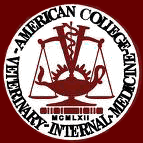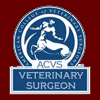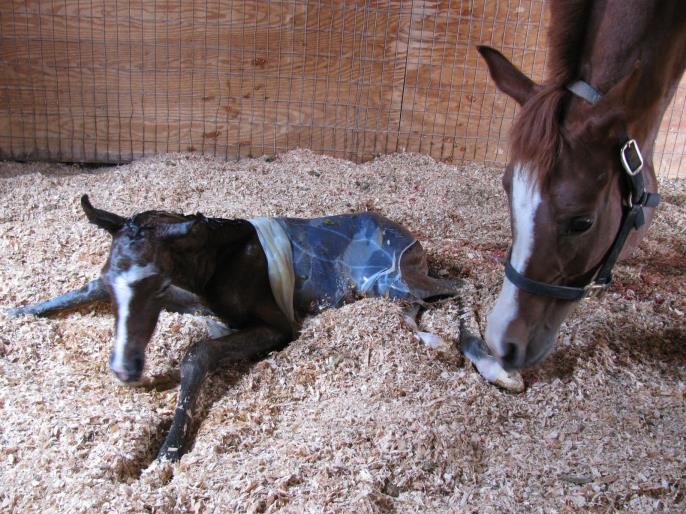


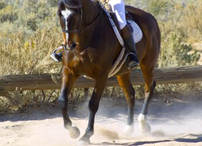
"Building healthy partners"
The Foaling Process
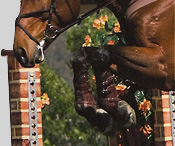
Most mares foal without difficulty, and are best left alone to foal unassisted as you watch from outside the stall. Unfortunately, when things do go wrong it happens rapidly and often with life-threatening consequences to both mare and foal. The best preparation for the abnormal is to know the normal. Here are the normal stages of labor, with notation when to CALL THE VET!
First Stage Labor
The mare has some control over first stage labor, and it can last intermittently for several days. Signs include restlessness, circling, getting up and down frequently, but no obvious strong contractions. If there is any doubt in your mind whether you are observing first stage labor or something abnormal, don’t hesitate to contact your veterinarian to discuss your observations.
Second Stage Labor
Second stage labor involves the actual delivery of the foal. In the horse this is a very rapid event. Once the mare is exhibiting strong contractions and her water has broken, the foal should be on the ground within 30 minutes. In a normal delivery you will see two front feet, one slightly ahead of the other, followed by the foal’s nose, head and neck. The mare may get up and down several times during second stage labor, and will appear quite distressed. Some mares may deliver their foal standing.
If more than 20 minutes has passed after the onset of strong contractions and delivery is not complete, CALL THE VET.
Third Stage Labor
Third stage labor involves passage of the placenta. During this period the foal will be struggling to rise, standing, and making attempts to nurse. The mare may show signs of abdominal cramping (colic) as her uterus begins the rapid process of contracting to expel the placenta. The placeta should be passed within two hours of the foal’s birth. Save the placenta in a bucket covered with water so that it can be examined during the foal’s post-natal exam.
If the placenta is not passed within 2 hours of delivery, CALL THE VET.
The Newborn Foal
A normal newborn foal will attempt to roll up on his/her chest and shake his/her head almost immediately upon delivery. Initial attempts to stand should begin within 10 minutes and the foal should be standing within 30 minutes and nursing within 2 hours.
If the foal is not standing within 30 minutes, or is not nursing within 2 hours, CALL THE VET.
The foal will pass black, grape-like clusters of manure (meconium) for the first 12 hours, then manure will transition to a soft pasty, orange manure. The normal foal will nurse about once an hour, wander around a bit, then lie down and spend most of his/her time sleeping.
Your Post-Delivery Jobs
Assuming your foal is delivered without complication, you should dip the umbilical cord in dilute chlorhexidine or 2% iodine within 30 minutes of birth. Do not cut or tie the umbilical cord, rather allow it to break on its own. When the placenta passes, collect it and save it in a bucket. Once the foal is up and nursing by 2 hours, give everyone a hug and a smile, and CALL THE VET to schedule your foal’s post-natal exam, which should happen when the foal is 18-24 hours old. It is critical to confirm that your foal has consumed adequate colostrum (the mare’s first milk) which contains essential antibodies. This will be confirmed during the post-natal exam with a stall-side blood test, and a full physical examination of the mare and foal, as well as placental evaluation will be performed.
Call today to schedule your Fall Clinic appointment! HighDesertEquine.com
Building Healthy Partners
© High Desert Equine
PO BOX 60730
RENO NV 89506
EMERGENCY (775) 742-2823 OFFICE (775) 969-3495
FAX (775) 969-3923

